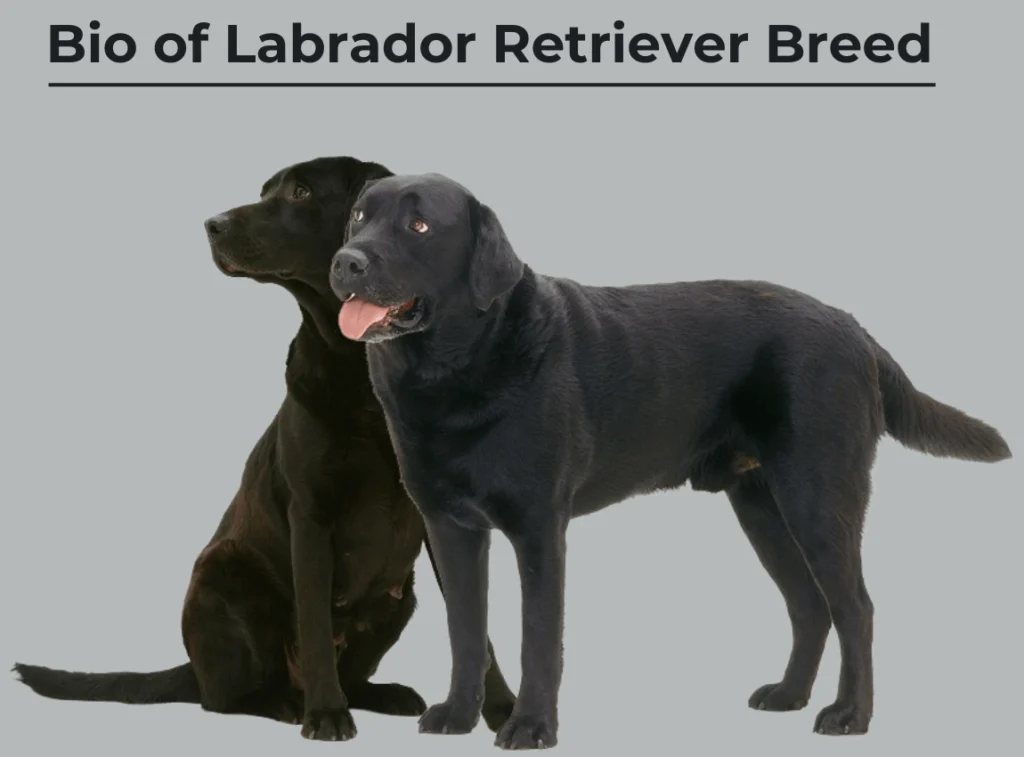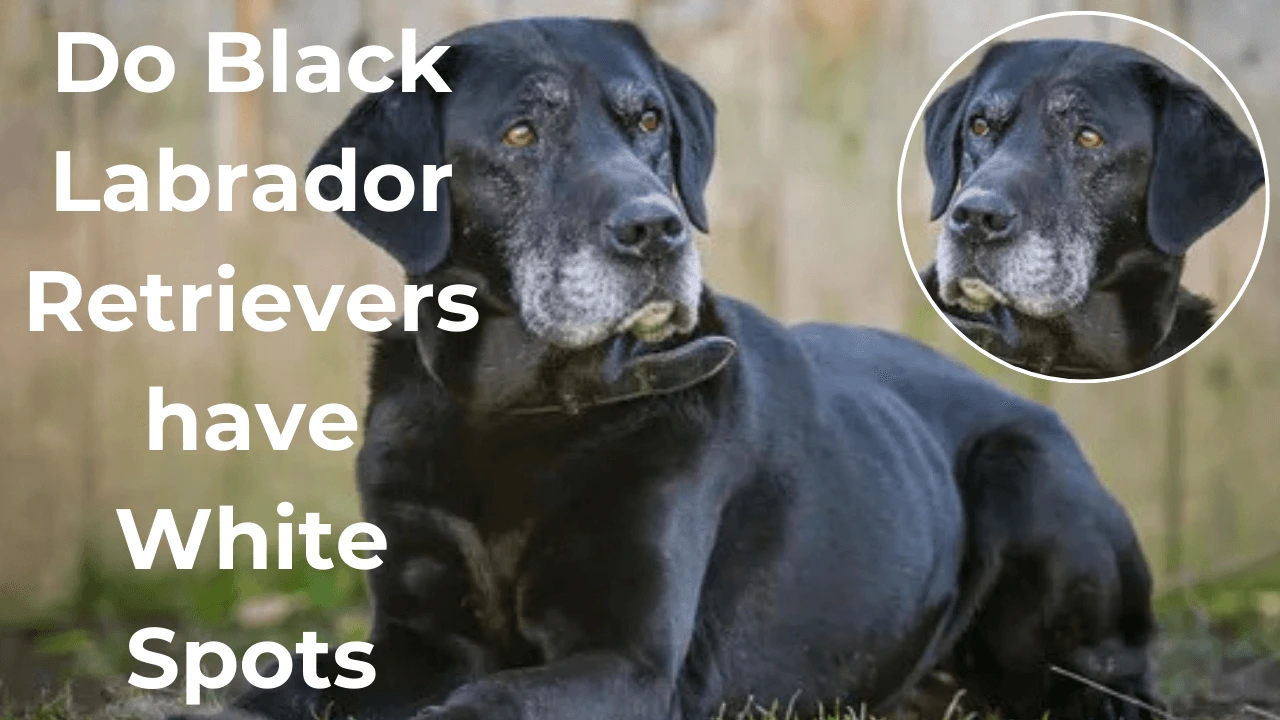The black Labrador Retrievers is one of the most popular dog breeds worldwide known for its sleek black coat, friendly demeanor and exceptional intelligence. However, dog enthusiasts and potential owners often wonder Do black Labrador Retrievers have white spots.
Although the breed standard usually calls for a solid black coat. But white markings may occasionally appear, causing curiosity and questions about their origin and significance.
To understand these spots we need to understand the genetics of Labrador Retrievers, their breeding history and how the breed standard determines coat color. In this article, we’ll look at the causes of white spots in black Labradors.

Whether they are common and what they mean for health, behavior and registration. If you are a Labrador owner or are looking to become one. So this guide will provide you with valuable information on this fascinating subject.
- Understanding the Labrador Coat Colors:
- History and Temperament of Black Labrador Retrievers:
- Bio of Labrador Retriever Breed:
- Why Do Black Labrador Retrievers Have White Spots:
- What Do White Spots Look Like on Labrador Retrievers?
- Does a White Spot Mean My Labrador Isn’t Purebred?
- Are There Any Health Concerns Associated with White Spots?
- Embracing Your Lab’s Unique Features:
- What Should You Do If Your Lab Has a White Spot?
- Conclusion
- Frequently Asked Question:
Understanding the Labrador Coat Colors:
Before we talk about white spots so let’s take a step back and talk about the color of a Labrador retriever’s coat. Labradors generally come in three standard colors.

- Black: The classic black coat that many people think of when they think of a Labrador.
- Yellow: A yellow Labrador, ranging from a light cream color to a deep golden color.
- Chocolate: Rich, warm shades of brown give this color a unique appeal.
These combinations of colors are genetically determined by two main genes that specifically control pigmentation. Since black is the most dominant color you’ll see more black Labradors than yellow and chocolate. However, just because a dog has a predominantly black coat doesn’t mean that the color is completely uniform white spots serve this purpose.
History and Temperament of Black Labrador Retrievers:

The Origin and History of Black Labrador Retrievers:
The Black Labrador Retriever is one of the world’s most popular and best-loved breeds renowned for its intelligence, loyalty and versatility. The breed’s history dates back to the early 19th century in Newfoundland (Canada) where it was bred as a working dog to help fishermen. Originally known as the St John’s Dog. It was recognized for its exceptional swimming ability and its talent for collecting fishing nets and gear.
The British aristocracy began breeding working dogs in England during the early 1800s. These animals were imported and eventually passed on to other noble families. This led to the naming of this Canadian-bred breed as Labrador and its lineage being extended through the culture that gave rise to Labrador. Eventually, Labradors began to be bred in three main colors brown, black and yellow. Black Labradors are particularly popular because of their sturdy build, work ethic and strong pedigree and have excelled as bloodhounds and stallions.
Physical Characteristics and Popularity:
Black Labrador are medium to large dogs with a muscular build and a smooth, waterproof coat. Their black coat is often combined with expressive eyes and distinctive otter tails that help them swim. These dogs have become indispensable members of households around the world due to their adaptability, athleticism and proficiency in a variety of roles including assistance, therapy and law enforcement.
The Temperament of Black Labrador Retrievers:
Black dogs are famous for their friendly, social and gentle behavior. They are highly social animals forming strong bonds with their families and getting along well with children and other pets. They are very sociable and often try to please their owners which makes training them a pleasant and successful process.
Intelligence and Trainability:
One of the most striking features of the Black Labrador Retriever is its intelligence. It is one of the dog breeds with the best obedience and working intelligence and excels in tasks such as agility, obedience training and search and rescue. Its willingness to learn and work makes it a popular choice for both novice owners and better-experienced trainers.
Bio of Labrador Retriever Breed:

| Attribute | Description |
| Origin | Newfoundland, Canada |
| Breed Group | Sporting Group |
| Size | Medium to Large |
| Weight | Males: 65–80 lbs (29–36 kg)and Females: 55–70 lbs (25–32 kg) |
| Height | Males: 22.5–24.5 inches (57–62 cm); Females: 21.5–23.5 inches (55–60 cm) |
| Lifespan | 10–12 years |
| Coat Type | Short, dense, and water-resistant |
| Coat Colors | Black, Yellow, Chocolate |
| Temperament | Friendly, Intelligent, Outgoing |
| Exercise Needs | High, they require daily physical activity and mental stimulation |
| Trainability | Highly trainable, eager to please |
| Good with Children | Excellent; patient and gentle |
| Social Compatibility | Gets along well with other pets and strangers |
| Common Roles | Family pet, service dog, therapy dog, hunting companion, search-and-rescue |
| Intelligence | Ranked among the most intelligent dog breeds |
| Grooming Needs | Low; regular brushing to control shedding |
| Energy Level | High; needs consistent activity and engagement |
Why Do Black Labrador Retrievers Have White Spots:
White spots on a black Labrador are usually related to its genetic makeup. While Labradors are essentially bred to specific breed standards heredity and genetic variation can also affect their appearance. Here are some reasons why white spots may appear
Ancestral genetics:
Labradors are originally a cross between Newfoundland and St. John’s Water Spaniels both of which can have white spots. Even if the parent dog doesn’t have white spots they can appear in modern Labradors. It’s like a little reminder of their genetic heritage!
Recessive genetic traits:
Sometimes recessive genes pair up to produce offspring with white patterns even if both parents have black coats. These genes don’t always show up in every generation so it’s not uncommon for a black Labrador to have white markings.
Breed standards and reality:
The American Kennel Club (AKC) and other organizations have specific breed standards for Labradors. According to the AKC, a small white spot on the chest of a black Labrador is acceptable but larger patches or other markings may not qualify the dog as a show dog. However, most people don’t keep their dogs as show dogs and love them just the way they are so these markings aren’t a big deal in the grand scheme of things.
What Do White Spots Look Like on Labrador Retrievers?
White spots on black packs can vary in size and location. The most common patterns are as follows.

Chest stains:
The most common white stains are small spots on the chest is permissible. They can be as small as a shirt button or slightly larger.
Marks on toes or paws:
Some black Labradors have white or light-colored hairs on one or more toes. They look like paint spots on the paws.
Labradors with incorrect markings:
Sometimes black Labradors can be seen with white markings on the muzzle such as stripes or large white spots. These are not typical Labradors but they are as affectionate and healthy as any other Labrador.
Does a White Spot Mean My Labrador Isn’t Purebred?
White markings may cast doubt on the dog’s pedigree but this does not mean the Labrador is not purebred. Even purebred Labrador can have white spots for the reasons mentioned above. If you are concerned about your dog’s pedigree a DNA test can help you understand the genetic structure and confirm the breed.
Are There Any Health Concerns Associated with White Spots?
The good news is that white spots on a Black Labrador are purely cosmetic. They do not affect your dog’s health, temperament or abilities. Whether your Labrador is a loyal friend, an energetic hunting companion or a friendly family pet, white spots won’t get in the way of anything.
Embracing Your Lab’s Unique Features:
One of my favorite things about Labradors is their personality. No two Labradors are exactly alike and various traits including small white spots set them apart. I know owners who refer to their Labradors with markings such as “spots” and “patches”. It’s a fun way to complement their personality.
When I see white spots on a black Labrador I don’t see it as a flaw. It reminds me of the rich history and genetic diversity that makes this breed extraordinary. These little white spots are also often a source of conversation at dog parks and on walks.
What Should You Do If Your Lab Has a White Spot?
If you notice white spots on your black Labrador, don’t panic – here are some simple steps to take:
Appreciate your Labrador’s unique look:
Appreciate the special patterns that are part of the Labrador’s unique charm.
Check for changes:
Although white spots are usually harmless it is important to monitor your dog’s coat for any changes. If you notice any new spots or unusual skin problems contact your veterinarian to rule out health problems.
Share your dog’s story:
Exchange ideas with other Labrador owners who have dogs with similar black and tan markings. This is a great way to build community and learn more about the Labrador breed.
Also Read: https://thepetlive.com/black-siberian-husky-breed/
Conclusion
There’s a reason the black Labrador retriever is a favorite breed. Their intelligence, loyalty and friendly nature make them great companions. These markings are a testament to the breed’s rich history and complex genetics. But don’t worry Labrador Retrievers are primarily known for their solid black coat but can sometimes have white markings due to genetic variations or ancestry.
While these markings do not meet the breed standard for show dogs. Black Labrador Retrievers are perfectly normal and do not affect the dog’s overall health, temperament or suitability as a faithful companion. Whether black or white the Labrador can be a valuable addition to any family because of its affectionate nature and versatile personality.
Accepting these small differences is a recognition of the uniqueness of each individual and a reminder that beauty is not about perfection. But about the unique qualities that make a pet special.
Frequently Asked Question:
Can black Labradors have white spots?
Yes, black Labradors can have white spots due to genetic variations or ancestral traits. These spots are harmless and usually occur on the chest or paws. Although Labradors do not meet the breed standard for show dogs. Black Labradors are perfectly normal for pets.
Why does my black dog have white spots?
White spots in black dogs can be genetic or inherited from ancestors. These spots usually appear at birth and are not a sign of health problems just a unique characteristic of your dog.
Why is my black Labrador turning white?
Black Labradors can turn white due to age-related fading especially on the face and muzzle. This is a natural part of the aging process and usually begins around 5-7 years of age. Labrador retriever is not a sign of a health problem.
Do black Labradors have health problems?
Like other dogs, black Labradors can have health problems such as hip dysplasia, obesity and ear infections. Regular health checks, a balanced diet and exercise help to maintain good health and longevity.
What is the lifespan expectancy of a Black Labrador retriever?
The life expectancy of a Black Labrador is usually around 10-12 years. Although some dogs can live much longer with good care. A healthy lifestyle and regular visits to the vet can contribute to a longer life.
How old does a Black Labrador live?
Black Labradors reach adulthood at 12 to 18 months but can continue to mature mentally for up to two or three years.
Can Black Labradors be aggressive?
In general, black Labradors have a friendly and gentle character. It is rare for Labradors to become aggressive which is usually due to poor socialization, improper training or fear. Proper training and a loving environment can help maintain their calm nature.










